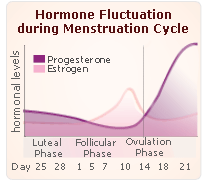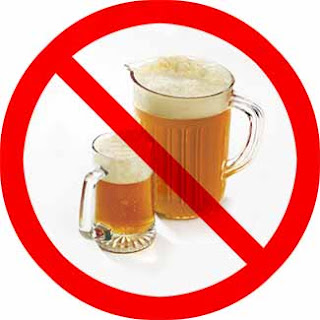 If hormones aren't the curse of women, I don't know what is.
If hormones aren't the curse of women, I don't know what is.It's not like our lives are hard enough with high heels, anorexic super models, childbearing, but we also have to get a high does of hot flashes, bloating, cramps, and PMS.
I blame it all on Eve. She just had to listen to that nasty snake and eat that forbidden apple... Fine! Well at least, she got a good taste of fruit. But what about the rest of us? Yeah, we get night sweats and problems sleeping and mood swings, all for nothing! I feel gypped. (Image taken from http://christophermattix.wordpress.com/category/food-for-thought/page/3/)
But I do have to hand it to God for providing women with means of coping: chocolate, ice cream, support groups, sappy romance flicks, and those video games where a woman character can beat up men.
Yep, for some reason taking female hormone issues out on men has a gratifying sense to it. For instance: Where do you think the idea that men should take out the garbage came from? Come on don't give me that look. You know it as well as I do. Think about it: Who else would come up the idea that men should cart stinky crap outside into the heat?
Anyway, let's talk about Progesterone. I know, men complain about estrogen all the time. Yeah, well women complain about testosterone. But no one should complain about progesterone; it's the feel good hormone. It's the one that we should all come to love and enjoy. It's the hormone that helps women get some sleep, avoid hot flashes, have better memories, and just plain feel peaceful. Well, that is when it is in balance.
 Okay, if you are a man reading this: No, I don't suggest that you run out and buy your woman progesterone to keep her from getting mood swings. Just stick to the chocolate. It's safer and more romantic.
Okay, if you are a man reading this: No, I don't suggest that you run out and buy your woman progesterone to keep her from getting mood swings. Just stick to the chocolate. It's safer and more romantic.You return with a paper bag of progesterone instead of a box of chocolate, and taking out the garbage will be the least of your worries. [Note: some women, like me, are allergic to chocolate and would prefer the progesterone.]
What's the big deal about Progesterone?
Progesterone is a hormone produced by the ovaries, placenta, and adrenal glands. It not only is involved in the menstrual cycle, female sexual development, and pregnancy, but it also plays a major role in the development of cortisol (one of the body's stress hormones).
I am going to skip over progesterone's role in pregnancy: I figure that the detailed labor and delivery post covered enough of the fear factor that I don't want to re-engage the post-traumatic stress in by mentioning the physiology of pregnancy. I know, the flashbacks were horrific. ;).
Other effects of progesterone:
- Involved in synthesis of fat into energy (It's one of "The Biggest Loser" hormones.)
- Participates in blood clotting
- Acts as a diuretic. (No progesterone and you bloat up like the Stay-puft Marshmellow Man.)
- Stimulates bone building, thus preventing osteoporosis
- Helps regulate blood sugar levels
- Acts on oxygen levels in cells
- It's part antidepressant on its mother's side.
What are some of the expected levels of progesterone?
This is when you hijack a medical lab and ask them to take your blood progesterone level. Or you could always visit your health professional and have them check your level for you, but where's the fun in that.
Reproductive years: 8-10 ng/ml

Menopause (lows): 0.1-8 ng/ml
Menopause (highs): 10-16 ng/ml
Post-menopause: 1 ng/ml
Durning pregancy: 16 ng/ml
Normal ovulation: 20 ng/ml
(Image and data from www.natural-hormones.net ; and Speroff, et al. (1989). Clinical Gynecologic Endocrinology and Infertility. 4th ed. Baltimore: Williams & Wilkins.)
And why do we care about the stupid numbers? Well, WE don't. But it's those psycho anal physicians that are so addicted to numbers, that we have to feed them lab results at least once or twice a week in order to prevent them from having withdrawl symptoms.
Either that or those mad scientists with data fetishes. Sometimes, I can't tell which. (Image from http://www.arronbailiss.co.uk/).
Down on Your Luck: Low Levels of Progesterone
Symptoms of low progesterone are those that involve the men running sreaming and the women wanting to beat the living tar out of them. Either the woman's progesterone is low or the man was caught cheating. Either way the woman is irritable, sweaty, and ready to break something.
Low Progesterone Signs and Symptoms:
- Irritability
- PMS/ Mood swings
- Difficulty concentrating
- Memory deficiencies: memory loss, lack of mental acuity, brain fog which is not to be confused with brain freeze. That is derived from drinking huge amounts of Slushies too fast. [And yes, if you were wondering, low hormones have been linked to Alzheimer's disease*. ]
- Insomnia
- Hot flashes/ Night sweats
- Anxiety/ panic attacks
- Depression
- Irregularity of menstrual cycle
- Abnormal/ excessive uterine bleeding
- Uterine fibroids
- Uterine cancer
- Strong cramps during menustration
- Greater presence of blood clots during menstruation
- Vaginal dryness/ irritation
- Joint pain/ muscle pain
- Breast tenderness
- Frequent urinary tract infections
- Headaches, Dizziness
- Weight gain
- Edema /bloating (water retention)
- Fatigue
- Dry skin
- Low blood sugar levels
- Deficiency of Magnesium ( This kind of has the chicken vs the egg dilema about it.)
- Thyroid malfunction
- Gallbladder disease
- Infertility/ difficulty with conception
- Lack of libido (Men tend to mourn this aspect.)
I do have to state here that low thyroid (or hypothyroidism) can mimic many of the signs and symptoms of low progesterone and vice versa. It is especially important that you contact your healthcare provider when you experience any of the above.
Granted, in the case of dizziness, fatigue, and headache, these symptoms are very ambiguous for medical practitioners. They are like the needle-in-the-haystack: You have the needle, but now you have to figure out which haystack it was in and how it got there.
In my next post, some natural and medical methods of relieving the symptoms of low progesterone will be discussed.
References list:
*Carroll, J.C., et al. (2007). Progesterone and estrogen regulate Alzheimer-like neuropathology in female 3xTg-AD mice. The Journal of Neuroscience, 48: 13357-13365.
Simpkins, J.W., et al. (1997). Role of estrogen replacement therapy in memory enhancement and the prevention of neuronal loss associated with Alzheimer's disease. The American Journal of Medicine, 103:19S-25S.
Vongler, J.M and Frye, C.A. (1999). Progesterone in Conjunction with estradiol has neuroprotective effects in an animal model of neurdegeneration. Pharmacology Biochemistry and Behavior, 64: 777-785.
Other links regarding low progesterone:
http://www.diagnose-me.com/cond/C8779.html
http://www.tarunaoils.com/articles/low-progesterone-levels-signs-symptoms.asp



























